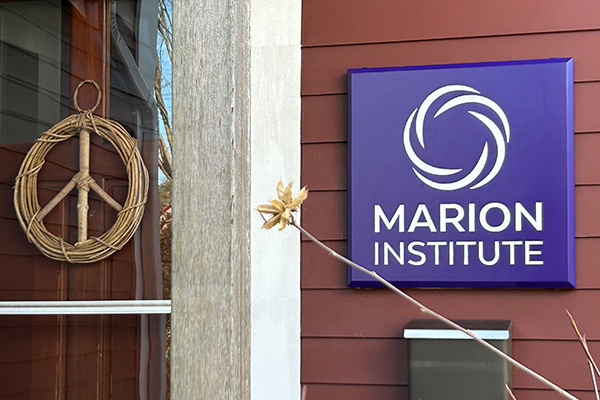We are systems level thinkers, working to engage individuals and communities in root cause solutions that elevate health, food, and environmental equity.
WHAT WE DO:
- Our newest initiative, Frogfoot Farm – Neighbors Feeding Neighbors is a farm-to-food relief program that will grow and harvest fresh produce for area food relief programs.
- Anchored in outdoor garden classrooms that serve as microcosms of regional farms, our elementary school Grow Education farm-to-school programming delivers enrichment science lessons on plant lifecycles, our regional climate, and the health benefits of eating fresh produce.
- With 500+ members and counting, the Southcoast Food Policy Council (SFPC) is the backbone of our regional food system coalition whose charter is to strengthen our regional food networks, eliminate food & nutrition insecurity, inform our communities about the food system, and advocate for positive food system policies.
- Our BioMed program promotes a holistic approach to health based on the foundation of food as medicine. Nutrition, detoxification, and immune building are pillars of this root-caused approach to wellbeing.
- Our Connector Series events bring thought leaders from around the world to the south coast of Massachusetts, to help share ideas and expand the impact of their work, locally and beyond. In small and large venues, we introduce people with cutting edge ideas to audiences with a thirst for knowledge and a passion for positive change. These events have focused on health, social justice, food, sustainability, the environment, responsible business, and individual potential.
- For thirty years the Marion Institute has been the financial home of dozens of successful social change organizations. By providing fiscal sponsorship and administrative backing, our Greenhouse Initiatives enable an impressive array of visionary leaders to fully engage in the frontline implementation of their work, at every stage of growth and development.
OUR “GREEN” OFFICE
Green Building
Our office building is a renovated home and we utilized green building techniques in the renovation process. Green Building is the practice of increasing the efficiency with which buildings use resources – energy, water, and materials – while reducing building impacts on human health and the environment during the building’s lifecycle, through better siting, design, construction, operation, maintenance, and removal.


The Gurney House Green Restoration Project – October 2008
Only 15% of the entire 1 acre office campus, of which the Gurney House is part, is covered by impervious surfaces and adaptive and native plantings fill over 50% of the total site.The following is a short list of some of the key features that made the project green (click here for the full document):
- The high density spray foam insulation used is rated to have a standing R-Value of 6.8 per inch, but because it is able to prevent all air and moisture penetration it has an effective R-Value of 20+ per inch. This allows a relative R-Value rating of R-33 in the walls and R-60 in the ceiling.
- All appliances and fixtures including boilers, furnaces, AC condensers, refrigerator, dishwasher, and light fixtures are Energy Star rated.
- Operating windows on all sides of the building allow for natural cross breezes for passive cooling. The windows are double pane insulated glass, specially treated to be air tight and glazed with low E glass that helps suppress radiative heat flow.
- We weren’t sure what to do with the building’s exterior. We liked the look of faux stone siding, but in the end we chose a siding that is composed of natural raw and recycled materials including wood pulp, sand, water, and cement and is very low in toxicity. It offers great durability (the company warrants the product for 50 years, and the factory paint finish for 15 years), and low maintenance. It took us a while to learn about all of the Different Types Of Siding but we’re really pleased with how it turned out. We think it looks great!
- The resilient floors found in the restrooms and kitchens are high in recycled content and applied with non-toxic, low VOC emitting glues. Bamboo, a renewable natural material, was used in the lobby floor.
Sustainability
In a broad sense, sustainability is the capacity to endure. In ecology, the word describes how biological systems remain diverse and productive over time. For humans, it is the potential for long-term improvements in wellbeing, which in turn depend on the wellbeing of the natural world and the responsible use of natural resources.
In addition to living in a green building, we at the Marion Institute have implemented and continue to implement everyday practices that will make our office more sustainable. Click here to download the full document to green your home or office. We welcome all to come and visit our “green” office. We hope to see you soon!
“The Marion Institute provides support and insight to emerging initiatives that make a profound difference in the world. Their work does not show up at the head of the parade, but it is often the reason there is a parade at all.”
-Paul Hawken, environmentalist, entrepreneur, author







